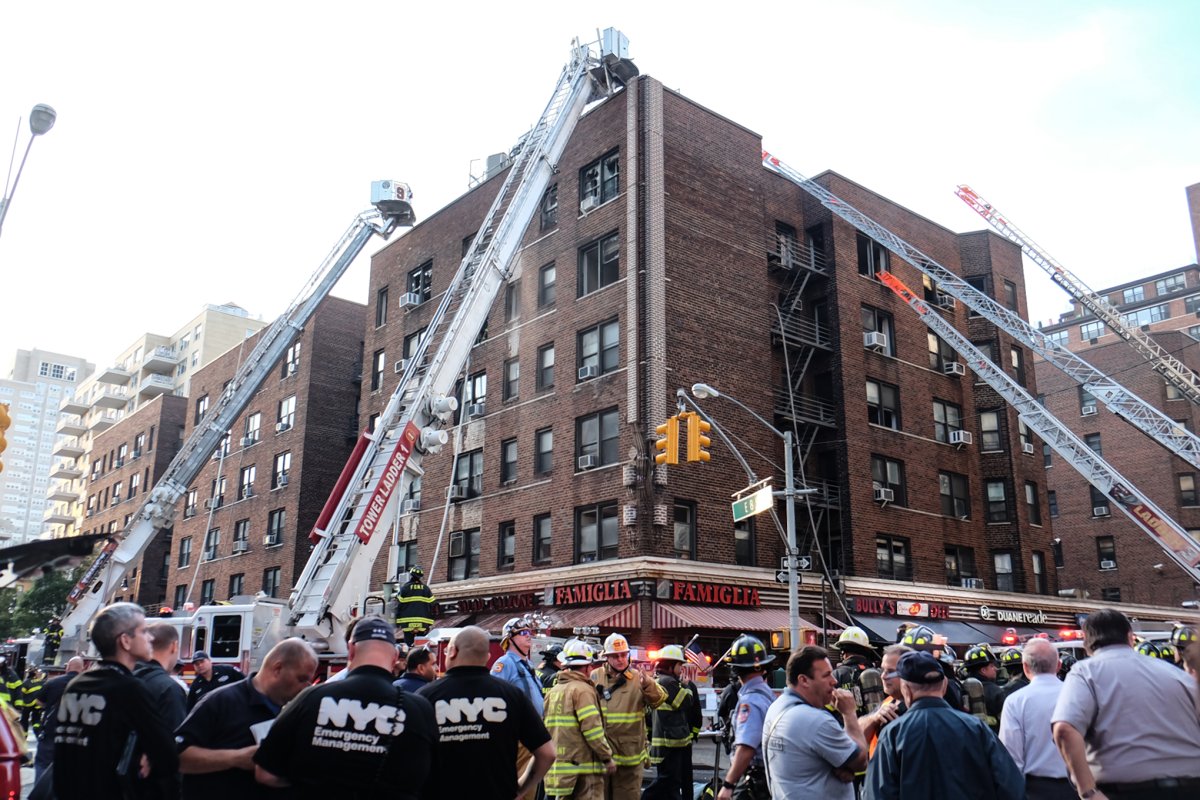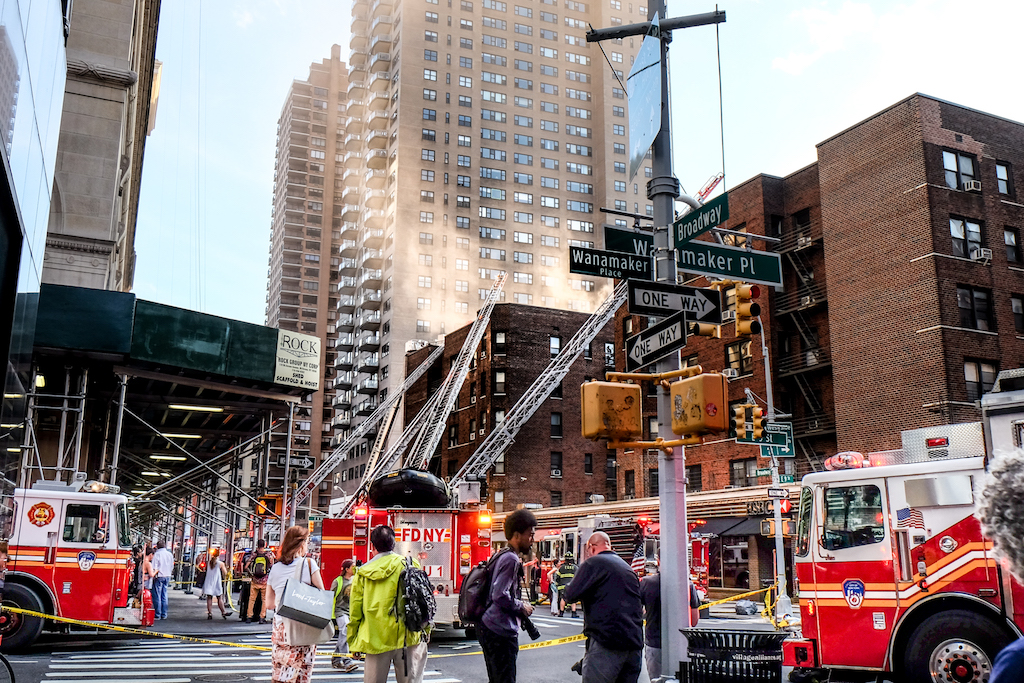
BY MICHELE HERMAN | Lately I’ve been thinking about something hardly anyone likes to think about: building fires. We all know, in an abstract sort of way, that fires are just as common a hazard in New York City as in drought-stricken forests in the West. But here they are impossible to anticipate, cause and blame are often hard to determine, and the water needed to put them out sometimes causes as much damage as the flames and smoke.
Fires are on my mind because of three recent ones in the Village, all in buildings that have been an integral part of my life. In June, in the middle of Gay Pride day, 615 Hudson St. burned. The fire shut down the restaurant Tavo (formerly Sung Chu Mei, a favorite of my family), which I wrote about for this newspaper. Fire marshals determined that it was caused by heat from an oven in close proximity to some lumber. Because the fire is still under investigation, Francisco Decrescenzo, the restaurateur, told me he wasn’t at liberty to talk about it, but he hopes to get the place up and running again soon.
A couple of days later, a fire severely damaged 60 E. Ninth St., a large six-story postwar luxury apartment house that happens to house our family dentist’s office, leaving us without a dentist for the foreseeable future. This one was caused, according to the Fire Department, by an accumulation of duct grease in the deli on the ground floor. The damage was so widespread that some 55 apartments need to be gutted.
But the fire that really shook me was the one that burned last October in 130 Jane St. (also known as Harbor House), a co-op in a converted warehouse on the western edge of the Village. This fire literally hit close to home, because my husband and I lived in the building for four years in the ’80s.
More than half the apartments in the six-story building had to be gutted due to a mix of fire and smoke damage and the water used by firefighters. The likely cause? Something tiny, innocuous and invisible: an electrical conduit between the fourth and fifth floors. Despite an in-depth investigation, no blame has been assigned. More than nine months later, 130 Jane is still empty and mostly without electricity, and repairs have not begun.
When I learned about the long evacuation, I immediately called Annie Yanovsky, a woman who has remained a friend since the days when she was our down-the-hall neighbor, to see how she was faring and find out what was taking so long.
“For me the damage was half and half,” reported Yanovsky, a realtor who lives in a duplex. “One of my floors had smoke damage and the other was almost destroyed to the studs from the water damage.”
The mold was removed, but the building is still uninhabitable because of soot in the ductwork. Yanovsky has been living in temporary quarters with rented furniture on the Upper East Side, and is determined to stay focused on the positive.
“Now we have a project manager and an architect,” she said. “The good side is that we’re a tight community, and everyone has been quite civil. And when it’s rebuilt we will have new infrastructure.”
Like us, she bought when the building was newly — and rather cheaply — renovated and the block still had a bit of frontier quality. Then the building supply company across the street left, the southernmost segment of the High Line that made the block feel like the wrong side of the tracks was demolished, the Hudson River Park opened and the Whitney Museum arrived. The lobby and the apartments at 130 Jane have been upgraded, some several times over. Among other celebrities who have lived in the building, Rachel Maddow and her partner have an apartment that they used as a pied-à-terre during the week.
What’s taking so long? Yanovsky pointed to two factors. First, the predictable messiness of paperwork, coordination of subcontractors, new “hold harmless” agreements for all contractors, decision-making by committee. Second, she says that some residents feel a more urgent need to return than others.
“There’s a divide between those with a sense of urgency and those without,” she said. “None of them are bad people, but they just have different circumstances: Some have temporary quarters in luxury buildings paid for by insurance. Others are paying out of pocket. The building is running out of money, and I’m sure there will be assessments.”
I spoke to another resident, Keen Berger, whose name will be familiar to many Villagers: She’s the local Democratic district leader. It turns out she has quite a dramatic story. Like Yanovsky, she sustained serious damage to one floor of her duplex, the floor with the living room and kitchen. So she camped out in her small but intact bedroom for three weeks, long after everyone else had fled. She had no heat or power.
“November was cold and I borrowed a sleeping bag,” she said. “There was electricity in the lobby, so I could plug in my coffee maker and get Internet. I showered at the Y. I wasn’t worried about safety — the 24-hour doorman was here. Hiram, the super, was here.”
Berger stubbornly stayed even when the floor of her living room and the wall into the next apartment were demolished.
“I got my bedroom tested and they said there was no mold,” she noted.
She raved about her Chubb insurance agent. Eventually, she said, “he told me I had to leave. He said insurance would pay. ‘If you were my wife or mother,’ he said, ‘I would handcuff you and get you out.’”
She moved in with one of her daughters in Brooklyn, where she currently remains, happy to have time with her two grandchildren but worried about overstaying her welcome.
Like Yanovsky, Berger has a great attitude given the protracted expulsion from home.
“I say to myself that there are Syrian refugees in Germany who may not be welcome, where they don’t speak the language,” she said.
Her insurer was willing to spring for a $20,000-a-month temporary West Village apartment. Berger declined.
“This is a problem in this nation and in this neighborhood: People are too rich,” she said. “I would be part of the problem and not the solution. I don’t think anyone should live in an apartment that costs anyone $20,000.”
Berger doesn’t draw a line between the long-term and more-recent residents.
“I just see people,” she said. “They’re cranky now. I don’t think people are negligent. I see people who disagree and argue, but aren’t evil. Why does a relatively minor fire end up evacuating the building? The adjuster says the situation is not unusual — it’s complicated. I believe the board is doing the best it can.”
The results of the building’s recent annual election bear this out. Despite some serious grumbling, the shareholders re-elected the board president and most of the members.
As for fire prevention, there are some obvious lessons. Get good homeowners’ insurance and never let it lapse. Get your managing agent or property manager to ask all residents for proof of coverage. Keep batteries in your smoke and carbon monoxide detectors. Frank Dwyer of the New York Fire Department press office added: Know whether your building is fireproof or not; this will determine whether you need to evacuate or can “shelter in place.” And, he added, make sure your building’s staff and management are following the fire code.
Dwyer also taught me one of those lessons we all occasionally need to relearn about anecdotal evidence. Despite my feeling that fires are breaking out all around me, according to a new press report from the Mayor’s Office, 2016 was a banner year in the city: Serious fires decreased 9 percent, the biggest one-year drop in eight years. And fire-related deaths (48) were at their lowest in a century.


















